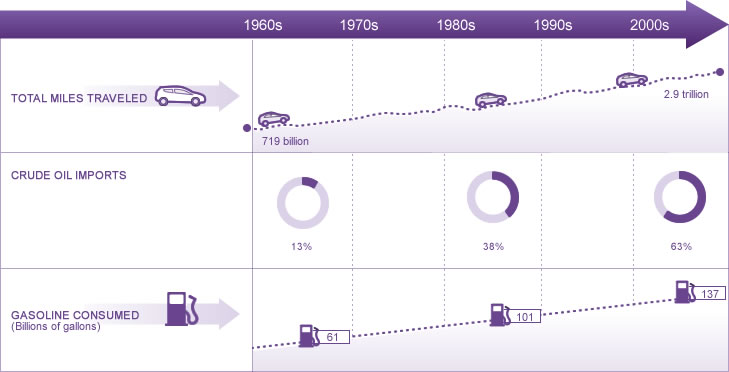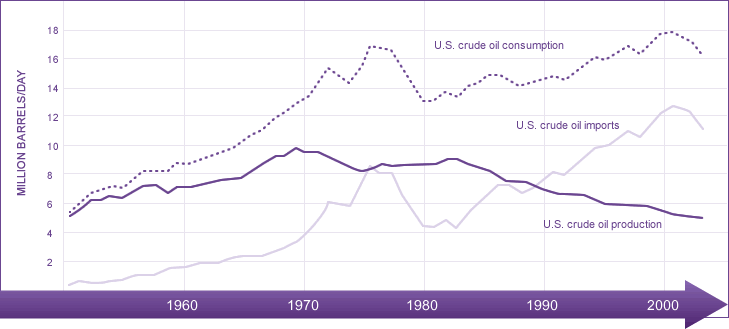U.S. Energy Security
The following charts illustrate the primary issue underlying concerns about U.S. energy security – crude oil consumption is increasing, while domestic energy production is decreasing. Therefore, the U.S. is increasingly reliant on imported crude oil. The first chart shows the increase in the number of miles all U.S. drivers are traveling each year, the increasing percentage of crude oil imports and the increasing consumption of gasoline.
Since the 1970s, the fuel efficiency of new passenger cars more than doubled and fuel economy rates in trucks has increased by 53 percent. This increase is reflected in the chart below, which shows that miles traveled increased by a factor of four while gasoline consumption increased by a little over a factor of two.
The second chart shows the increase in U.S. demand for crude oil and the simultaneous decrease in U.S. crude oil production. Unlike the utility sector, which has a diverse energy portfolio, light-duty transportation is approximately 95 percent reliant on crude oil. This dominance of crude oil, coupled with the growing reliance on foreign countries for supply, is at the core of the U.S. energy security concerns. For example, during the first month after protests began in Libya, U.S. gasoline prices rose almost 15 percent, despite Libya supplying less than 2 percent of global oil and less than 0.5 percent of U.S. oil.

Crude Oil Consumption, Imports and U.S. Production

- Overview
- Economy Data
- Environment Data
- Society Data
